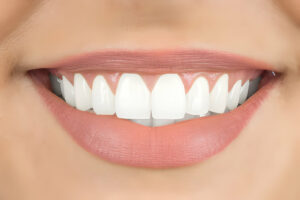The frustration of belly fat is a universal experience. Pinching that stubborn bulge can leave you wondering, “What type of belly fat is this, and how do I get rid of it forever?” While achieving a perfectly flat stomach might be unrealistic, understanding the different types of belly fat and implementing sustainable strategies is key to effective management.
Table of Contents
ToggleUnveiling the Mystery: Understanding Your Different Types of Belly Fat
Belly fat isn’t just one type; it comes in two main forms: visceral fat and subcutaneous fat. Each has distinct characteristics and requires a slightly different approach to management.
Visceral Fat: The Hidden Threat Within
What is Visceral Fat, and Why Should You Care?
Visceral fat sometimes referred to as “deep belly fat,” collects around your organs and lies beneath your abdominal muscles. Because this kind of fat is metabolically active, it can have a big effect on your health by releasing hormones and inflammatory chemicals. A higher risk of: is associated with increased visceral fat.
Risk Factors and Health Concerns Associated with Visceral Fat
Several factors contribute to visceral fat accumulation, including:
- Diet: Excessive sugar intake, refined carbohydrates, and unhealthy fats are significant contributors.
- Lack of Exercise: A sedentary lifestyle promotes visceral fat storage.
- Stress: Chronically elevated cortisol levels, the stress hormone, can lead to increased visceral fat.
- Genetics: Certain people have a hereditary tendency to accumulate more visceral fat.
Fortunately, even modest weight loss can significantly reduce visceral fat and improve your health markers.
Subcutaneous Fat: The Pinchable Problem
Unveiling Subcutaneous Fat: The Layer Beneath the Surface
Subcutaneous fat, the more noticeable type of belly fat, sits just below the skin. This is the fat you can pinch with your fingers. While not directly linked to the same health risks as visceral fat, excessive subcutaneous fat can still be a concern for overall health and well-being.
Can You Target Subcutaneous Belly Fat for Reduction?
Unfortunately, the concept of “spot reduction,” targeting fat loss in specific areas, is a myth. While certain exercises may strengthen muscles in a particular area, they won’t directly burn fat there. However, a combination of a healthy diet and exercise will lead to overall fat loss, including subcutaneous belly fat.
Belly Pooch: Addressing the Lower Belly Bulge
Causes and Contributing Factors to a Lower Belly Pooch
A lower belly pooch can be caused by various factors, including:
- Weak abdominal muscles: A lack of core strength can contribute to a protruding lower belly.
- Hormonal fluctuations: Estrogen dominance, particularly in women, can lead to fat storage in the lower abdomen.
- Bloating: Certain foods, constipation, and digestive issues can create a temporary pooch.
Effective Strategies to Reduce Your Belly Pooch
Strategies to address a lower belly pooch include:
- Strengthening core muscles: Exercises like planks, crunches, and leg raises can help tighten the abdominal muscles, creating a flatter appearance.
- Managing hormones: Consulting a doctor to address hormonal imbalances can be beneficial.
- Minimizing bloating: Eating a balanced diet rich in fiber and avoiding gassy foods can reduce bloating.
Beyond the Bump: Addressing Other Types of Belly Fat
Although the most prevalent types of belly fat are visceral, subcutaneous, and lower belly pooch, there may be additional causes that lead to the buildup of belly fat, such as:
- Postpartum fat: After childbirth, some women experience a persistent belly pooch due to stretched abdominal muscles and hormonal changes.
- Lipedema is a chronic condition causing abnormal fat deposition, typically in the legs and buttocks, but can sometimes affect the abdomen.
If you suspect a less common cause for your belly fat, consulting a doctor is crucial for proper diagnosis and management.
Diet for Belly Fat Reduction: What to Eat (and Avoid)
Building a Belly-Blasting Diet: Nutrient Powerhouses for Fat Loss
A healthy diet is the cornerstone of belly fat management. Here’s what to focus on:
- Whole foods: Prioritize fruits, vegetables, whole grains, lean protein, and healthy fats. These foods provide essential nutrients and keep you feeling fuller for longer, reducing calorie intake.
- Fiber: Consume a lot of foods high in fiber, such as whole grains, fruits, and vegetables. Fiber helps with general weight management by promoting satiety and intestinal health.
- Lean protein: Chicken, fish, beans, and tofu are sources that promote muscle growth and aid in fat burning.
- Healthy fats: Healthy fats found in almonds, avocados, and olive oil are nothing to be afraid of. These fats aid in hormone balance and encourage fullness.
Foods to Limit: Minimizing Belly Fat Accumulation
Here are some foods to limit for effective belly fat management:
- Added Sugars: Sugary drinks, processed foods, and desserts contribute significantly to visceral fat accumulation.
- Refined Carbohydrates: Sugary cereals, white bread, and pastries can raise blood sugar and cause fat accumulation.
- Unhealthy Fats: Processed foods frequently contain unhealthy fats, such as trans and saturated fats, which impede weight loss and cause inflammation.
- Alcohol: Excessive alcohol consumption can contribute to belly fat accumulation.
Remember, consistency is key. Aim for a balanced diet most of the time, and don’t be discouraged by occasional indulgences.
Exercise for Belly Fat Loss: Move Your Body, Shrink Your Waistline
Cardio vs. Strength Training: The Best Exercise Approach for Belly Fat
Reducing abdominal fat involves both strength training and cardiovascular exercise:
- Cardio: Aerobic exercise like brisk walking, swimming, or cycling helps burn calories and overall fat, including belly fat.
- Strength Training: Building muscle mass through exercises like weightlifting or bodyweight exercises boosts metabolism, helping you burn more calories even at rest.
Creating a Sustainable Exercise Routine for Long-Term Success
The most effective exercise program is the one you enjoy and can stick with. Here are some tips:
- Find activities you enjoy: Explore different exercise options until you find something you genuinely like.
- Start gradually: Begin with moderate exercise intensity and duration, and gradually increase as your fitness improves.
- Incorporate variety: Mix cardio and strength training to keep your workouts interesting and target different aspects of fitness.
- Aim for consistency: Aim for 150 minutes a week at a moderate to high level or 75 minutes a week at a high intensity.
Recall that exercise is but one component of a larger picture. For best results, combine a nutritious diet with regular exercise.
Conclusion: Saying Goodbye to Belly Fat for Good: Sustainable Habits for a Flatter You
Although there isn’t a miracle cure for belly fat, you can dramatically lower it and enhance your general health by combining a balanced diet, frequent exercise, and stress reduction.
Make long-term; sustainable lifestyle changes your major priority. To achieve and keep a flatter stomach, remember that a healthy attitude is essential. Celebrate your accomplishments, and don’t let failures deter you.
FAQ:
Can I Lose Belly Fat Forever?
Significant and sustained weight loss, even if you don’t achieve a perfectly flat stomach, can significantly reduce belly fat and improve your health. However, aiming for unrealistic goals or resorting to crash diets is counterproductive. Focus on healthy habits that promote a sustainable lifestyle change.
Is Spot Reduction a Myth?
Yes, spot reduction is a myth. Exercise can strengthen and tone muscles in a specific area, but it won’t directly burn fat there. Overall, fat loss through diet and exercise will lead to a reduction in belly fat as well.




















